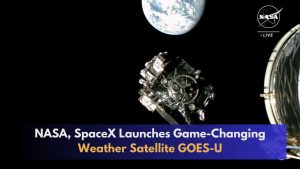SpaceX Launches New Satellite – Advancing Space Exploration Efforts
In a remarkable feat of engineering and ambition, SpaceX has successfully launched its latest satellite into orbit on August 4, 2024. This launch exemplifies not just the company’s relentless pursuit of innovation in space technology but also sheds light on the growing reality of global internet connectivity through its Starlink program. With continuous advancements, such efforts are reshaping not only how we explore space but also how we interact with it.
The Falcon 9 rocket, which is renowned for its reusable technology and cost-effectiveness, took off from Vandenberg Space Force Base at 12:00 AM PDT. It carried the most recent batch of Starlink satellites, which are aimed at providing high-speed internet access across remote areas of the globe. As the satellites embarked on their trajectory, spectators were once again treated to the awe-inspiring sight of coordinated rocket dynamics, with the first stage of Falcon 9 successfully landing on the guidance droneship in the Pacific Ocean—a clear testament to SpaceX’s commitment to sustainable spaceflight practices.

The Starlink project has been a pivotal part of SpaceX’s portfolio since its inception in 2015. The ambitions behind Starlink are profound; by deploying thousands of satellites into low Earth orbit, SpaceX aims to create a communication network capable of delivering internet service to underserved areas worldwide. As reported, nearly 6,000 satellites have already been deployed as part of this initiative, with plans to expand that number up to 42,000 in the near future. Such advancements could drastically alter the landscape of internet accessibility in places previously hindered by geographical challenges.
However, alongside the excitement surrounding these technological advances comes a series of concerns and discussions regarding their impact on both astronomical observations and the environment. Astronomers have expressed apprehension that the brightness of Starlink satellites could interfere with celestial observations, altering views of the night sky and potentially affecting scientific research. To counter this, SpaceX has worked on innovations such as adjusting the orientation and reflective brightness of their satellites.
Yet, the resilience of these satellites shines through not only in their operational uptime but in their potential ramifications for space debris management. While traditional satellites orbit at altitudes that can make them challenging to deorbit safely—thus creating remnants of metal and technology that pollute our atmosphere—Starlink satellites are designed with an intentional lifespan. They are engineered to burn up on re-entry into Earth’s atmosphere after completing their service life. This proactive strategy aims to mitigate long-term orbital congestion, addressing a primary concern among scientists and policymakers.
The real-world applications of Starlink are telling. Countries like Ukraine have utilized Starlink’s capabilities during crises, providing vital communication links amidst conflict. Similarly, areas struck by natural disasters showcase how such technology could prove pivotal in disaster recovery efforts. The flexibility and rapid deployment of these internet solutions make them essential components in modern crisis management strategies.
In addition to these operational advantages, the satellite launch also highlights an emerging trend among private companies leading the charge for technological advancement typically dominated by government space agencies. As more players enter this field, competition encourages innovation—fuelling new strategies for launching satellites and deploying technologies that could lead us into an even more interconnected future.
The excitement surrounding such launches runs parallel to a deeper conversation about humanity’s exploration of outer space; testing the limits of our capabilities while enhancing our collective knowledge about the cosmos. The horizon ahead is vivid with possibilities. As SpaceX continues to trailblaze this genre of exploration via next-generation rockets and satellites, each launch adds another layer to our understanding of how technology can extend our reach far beyond the confines of Earth.
In conclusion, the successful launch of SpaceX’s latest satellite into orbit marks another significant milestone in the ongoing journey toward comprehensive global internet access and beyond. With ambitions set high and an acute focus on reducing environmental impacts, SpaceX stimulates a competitive atmosphere hungry for innovation in space technology. The future remains bright for satellite technology, fostering diverse opportunities for innovation while meeting emerging global needs.

